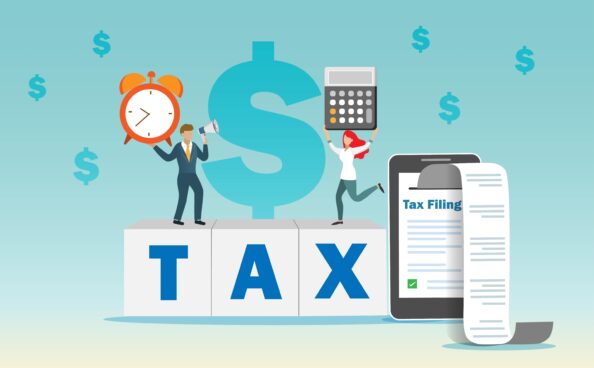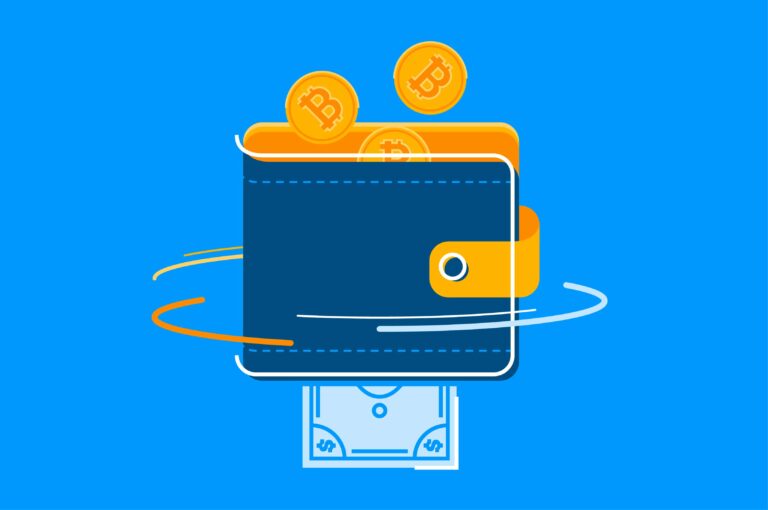
We all know about cryptocurrencies. Even though the hype around digital currencies has passed, more and more people are entering the crypto space. As a result, each new entrant is looking to make their blockchain-based business a success.
A cryptocurrency airdrop is one of the key marketing strategies that help companies raise awareness for their Web3 projects. The purpose is to distribute free coins or tokens in exchange for promoting a particular crypto project on social media and other marketing channels. Even crypto critics would probably accept some free digital currencies, wouldn’t they?
In this article, we will get acquainted with crypto airdrops and learn how to find a reliable project and avoid scams.
A cryptocurrency airdrop is a marketing strategy that involves transferring coins or tokens to users’ wallets for free or in exchange for performing a simple task. This could be sharing information about the project on social media, writing a blog post, connecting with a member of the project, or retweeting a post from the company issuing the currency.
Companies typically announce upcoming airdrops on their websites, social media pages, or third-party airdrop trackers where crypto enthusiasts can see them. The ultimate goal of a crypto airdrop is to raise awareness and attract more participants to the project.
Crypto airdrops are most often targeted at users of a specific blockchain platform and involve small amounts of a newly minted cryptocurrency. In some cases, platforms may airdrop governance tokens, giving their holders voting rights that allow them to make important decisions.
Remember that legitimate airdrops do not require a capital investment in the currency, as they are promotional.
There are different types of crypto airdrops, but they often include the distribution of a small amount of cryptocurrency to digital wallets, usually on Ethereum or Binance Smart Chain. However, some projects distribute NFTs instead of regular cryptocurrencies, which is less common.

Some projects distribute their tokens without requiring anything, while others ask users to perform certain activities before claiming the currency. These activities typically include holding a minimum amount of coins or tokens in the wallet, following social media profiles, or subscribing to newsletters.
In some cases, only wallets that have interacted with the project’s platform before a certain date may receive airdrops. Uniswap is an example of a company that follows this strategy and supports early adopters.

Crypto airdrops are all about promoting new blockchain solutions, startups, or projects. Just as new businesses send promotional emails with discounts, new blockchain projects launch their websites or promotions on cryptocurrency forums or social media to promote their airdrops. Distributing tokens through airdrops helps get a new project off the ground while ensuring a fair allocation of tokens within the community.
Generally, crypto airdrops promise to provide incentives to raise awareness of a project. When the startup’s token is listed on an exchange and reaches a wider audience, token holders can receive the rewards. The growing interest in a particular project or application plays a crucial role in increasing the price of its token.
In addition, some Web3 projects use their crypto airdrops to steal attention from more popular competitors. Some NFT collections, including the Bored Ape Yacht Club, have also released crypto airdrops to stimulate community members to hold their tokens.
Standard airdrops
To receive a standard crypto airdrop, interested parties simply need to show their interest. Each interested user must provide a valid wallet address. Some airdrops do not require any additional information.
Standard airdrops tend to have a set amount of tokens to distribute, with a limit on how many tokens each user can receive. Therefore, some standard airdrops are time-sensitive. Although these airdrops are popular because of their simplicity, there is nothing to prevent a single user from creating multiple wallets to quickly drain the airdrop amount, so they may be more difficult to receive.
Bounty airdrops
Bounty crypto airdrops are held when users complete certain tasks. These tasks typically aim to raise awareness of a project by retweeting a recent tweet about the project or posting on social media and tagging the company. In addition, there may be referral rewards for users who help recruit others, join the project’s Discord channel, or subscribe to the company’s newsletter.
Users often receive points equal to the amount of a bounty airdrop they earn in exchange for completing tasks. Furthermore, users may be required to earn a certain amount of points before qualifying for the airdrop. For example, a person may be eligible for an airdrop after earning 250 points, with each of the above items worth 50 points.
Holder airdrops
Holder crypto airdrops occur automatically to reward long-term holders of a particular crypto asset and those who hold the most. All users of the blockchain have full transparency into the wallets and distribution of tokens, as blockchain-related data is part of a publicly distributed ledger.
However, token holders may not want to receive airdrops. Nevertheless, the advantage of holder airdrops is that they ensure that only the largest investors receive the benefit. Some holder airdrops may only reward members who hold a certain amount of tokens. Otherwise, they may divide the reward amount proportionally.
Exclusive airdrops
An exclusive airdrop sends crypto only to specific users who are individually selected for the airdrop. They may be selected as airdrop recipients for being an early supporter of the project or an active community member, spending the most money on non-token activities, posting the most messages in a forum, etc. The goal of exclusive airdrops is to reward the loyalty of early users who have established a strong connection with the project since its inception.
An exclusive airdrop is one of the most centralized ways to reward project supporters. It may give airdrops to wallets that don’t have any tokens at all.
Raffle airdrops
Some of the above airdrops may be combined with a raffle airdrop. In such cases, projects typically state the number of airdrops they will give out and encourage users to earn a raffle ticket. Users can earn points, hold tokens, or simply show their interest to receive raffle tickets.
The number of people interested in the airdrop often exceeds the number of airdrops the project will deliver. Therefore, a lottery is held, and a few wallets are randomly selected to receive the airdrop.
Retroactive airdrops
Retroactive airdrops reward wallet addresses that have interacted with a particular dApp in the past. To define the users eligible for the rewards, such projects usually take a snapshot of the blockchain at different times.
The parameters for these airdrops are revealed post-factum, so users can hope that the dApps they interact with will reward early and loyal followers.
First, a company or project determines the need for an airdrop. It may be a response to a hard fork in the network, a market strategy, or an attempt to stimulate existing investors. It is also necessary to decide how to facilitate the airdrop and who is eligible to participate.
The next step for large airdrops is to launch a public campaign, which includes collecting information about interested parties. Although often limited to wallet addresses, companies may also collect email addresses to expand their contact list.
Smaller airdrops can rely on a snapshot, a capture of an instance that identifies who meets certain criteria. Any transactions that occur after the snapshot don’t affect the results of the airdrop. However, coin or token prices often suffer from volatility in response to when snapshots are taken.
After creating the list of airdrop recipients, the crypto airdrop is facilitated by smart contracts. The project can choose its Treasury wallet to facilitate the airdrop and publish the transaction block to prove the fairness of the airdrop. Therefore, the transaction will prove that the crypto airdrop leaves the company’s wallet and is distributed to the recipients.
Airdrop recipients often obtain coins or tokens directly. Some may need to add the coin or token and their addresses to their wallet in order to accurately view their wallet balance of the token.
If you are going to follow crypto airdrops, you need to be aware of possible scams. First, a legitimate crypto airdrop never requires any capital investment in the currency, as its goal is purely promotional. However, a dusting scam involves sending small amounts of cryptocurrency to unwary recipients.
Many crypto airdrop scams are based on getting investors to connect their digital wallets to phishing resources in order to receive their airdrops. The Web3 address often asks a user to connect their wallet to common and popular wallet services such as MetaMask, Trust Wallet, etc. Once an unsuspecting user connects their wallet by providing their secret phrase or keys, the scam is complete.
Airdrop scams may also appear when malicious actors convince market participants to invest in a particular asset in order to receive an airdrop of another item. For example, a project may claim that holding certain NFTs in a wallet will guarantee its owners a rare airdrop. While the airdrop may be legitimate, the project owners may use the market activity to sell their NFTs at a higher price.
Therefore, you should take the time to study the project’s leadership, read its public documentation, and gauge the sentiments of other investors before requesting an airdrop.

When a taxpayer sells the airdropped tokens, there may be a capital gain or loss. It is calculated based on the difference between the market price of the cryptocurrency at the time of receipt and the time of sale. It is important to note that there is never double taxation on an asset. Therefore, the taxpayer is taxed on the value of the asset received at the time of receipt and the amount of the change in value when it is sold.
The tax rate on the sale of your assets depends on the period the assets have been held. Taxpayers who hold crypto assets for more than a year before selling may qualify for long-term capital gains treatment, which has a lower tax rate than short-term capital gains.
To sum up, obtaining a crypto airdrop triggers a taxable event for cryptocurrency investors. Taxpayers are likely to pay taxes on the fair market price of the airdropped token as ordinary income. Taxpayers should also consult with an accountant to understand the tax implications and ensure compliance with applicable laws and regulations.
Now let’s talk about how you report crypto airdrops for tax purposes. The IRS considers airdropped assets to be ordinary income at the time of receipt, meaning that you must include the fair market price of the airdropped asset in your taxable income for the year in which you obtained it.
In case you sell your airdropped assets within one year of receiving them, the IRS will also tax any gain or loss on the sale as ordinary income. Therefore, the short-term tax rate on gains from airdropped assets is equal to the ordinary income tax rate.
If you hold the assets for more than one year before selling them, you may qualify for long-term capital gains treatment. This has a lower tax rate than short-term capital gains and depends on your income level and filing status.
In addition to federal taxes, you may be required to pay state and local taxes on crypto airdrops, depending on your state of residence and local tax regulations.
You must keep accurate records of your cryptocurrency airdrops and report them on your tax returns. Failure to report your airdrops as taxable income will result in penalties and may trigger an audit by the IRS.
Fast and instant
Crypto airdrops are designed to automatically appear in users’ wallets, making them a quick and immediate solution to inform users about new projects. What’s more, they don’t require any action on the part of the recipient, as crypto airdrops are self-executing thanks to smart contracts.
Help establish loyalty and user base
Airdropped assets can increase in value over time, providing long-term motivation for early backers to stay with the project. As the value increases, it may become attractive for users to buy, sell, and trade additional tokens with others, thereby expanding the project’s user base.
Low-cost marketing
When free products are distributed at certain events, times, or to enough users, they are likely to help create hype around the project quickly. As a result, recipients may naturally be excited to learn more about the coin or token and the related project. They may also like the idea of discussing these shares with other crypto exchange users or enthusiasts.
Airdrops may decrease token value
If most of the airdrop recipients decide to sell their assets in a given period, the value of the project’s tokens may decrease. In this case, both current investors and the company’s business brand will be negatively affected.
Airdrops may be seen as low-quality projects
Some users may consider crypto airdrops as low-quality projects and focus on rewarding network contributors and miners instead of distributing free tokens to non-heavy contributors to a project.
Lack of liquidity
Crypto airdrops can lack liquidity, so they can be worthless if users can’t trade them on an open exchange. Some early-stage projects often claim that their airdrops are worth thousands of dollars. However, these gifts to wallet holders can turn out to be worthless if they can’t be traded openly.
Loyalty isn’t guaranteed
Some users may decide to sell their tokens for profit immediately after receiving airdrops and not interact with the project anymore. Unfortunately, distributing enough crypto airdrops does not guarantee successful handling of low engagement.
Tokens have limited supply
The amount of tokens a project can distribute depends on the project’s budget and goals. Too few airdrops could be a sign of low public interest in the project, while too many crypto airdrops could completely deplete the token supply.

Cryptocurrency airdrops and ICOs may seem very similar. Both concepts are likely to appear at the beginning of a project, and both aim to distribute coins or tokens.
Initial Coin Offerings typically require a transaction, while crypto airdrops may not demand an investment. Even though the transaction may reward investors by providing coins or tokens at a discount, investors are more likely to buy the coins or tokens in contrast to free airdrops. In addition, ICOs are often initially offered to venture capitalists.
Moreover, these two events have very different target audiences. As for ICOs, they strive to attract larger investors who are looking for a project to put their capital into. They are more likely to view the project as an investment. Conversely, crypto airdrops typically aim to raise awareness among smaller investors. Even though users may not have much use for a small airdrop, the point is to attract smaller investors to transact with cryptocurrencies.

Basically, crypto airdrops can become an exceptional way to strengthen your crypto portfolio without the need to buy digital assets. What’s more, they can help you get in on the ground floor of a new platform. Still, it will be better for you to expand your cryptocurrency knowledge by taking a special course. The right educational techniques will help you get a deeper understanding of crypto airdrops.
Nevertheless, airdropped assets can also be worthless. You may spend time searching for and claiming airdrops, only to have their prices drop before you can sell them.
Unfortunately, there are some even greater risks. For example, you may give money or sensitive information to a fraudulent platform or other malicious entities. You need to be a crypto enthusiast or even an expert to benefit from airdrops, as they tend to keep up with new updates and manage their portfolio regularly.
The cryptocurrency world has witnessed many crypto airdrops recently. However, many more airdrops are likely to take place shortly. Let’s take a look at some examples of crypto airdrops.
GAS DAO

The GAS DAO conducted an airdrop on the Ethereum blockchain, distributing GAS tokens to individuals who had paid at least $1599 worth of gas fees on Ethereum. Nearly 57,000 addresses were eligible to receive crypto airdrops and claimed their reward on the website. In addition, GAS tokens provide voting rights in the GAS DAO, which can become a representative of active users in the Ethereum network.
Shardeum Airdrop

The Shardeum network is a smart contract platform built on top of the Ethereum Virtual Machine (EVM). The protocol has already reserved 51 percent of its 500 million token supply to issue its own native SHM token. The project team anticipates that 5% of the token supply will be distributed via airdrop.
To qualify for the airdrop, add Liberty to your wallet, request testnet SHM tokens, and interact with the smart contracts built on top of it. The team has also claimed that users could qualify for airdrops by interacting with future dApp projects built on Shardeum.
Stellar

Stellar is considered one of the largest crypto airdrops of all time. The project partnered with Blockchain.com to airdrop $125 million worth of Stellar lumens (XLM) to Blockchain Wallet users in November 2018. Stellar became Blockchain.com’s first airdrop partner after the launch of the Blockchain Airdrops program in October 2018. Blockchain.com distributed the airdrop to attract users to interact with cryptocurrencies and digital wallets.
Uniswap

Uniswap is one of the most notable crypto airdrops. The project rewarded over 250,000 early users of its exchange platform with an airdrop of Uniswap tokens (UNI) in September 2020. Those who transacted at least once before September were qualified for the airdrop. Recipients could get a minimum of 400 UNI. The value of the token increased by 160 percent two days after the airdrop, attracting attention during the token’s airdrop window.
zkSync Airdrop

zkSync is a Layer 2 scaling solution built on the Ethereum blockchain. According to the project’s developer documentation, the company has always intended to release a token for the zkSync network. However, the project doesn’t have a token yet, but it already has several decentralized applications (dApps) running on its network. Users who interact with the dApps and the protocol on the network will likely be eligible to receive zkSync airdrops.
First, you need to create a private crypto wallet that will allow you to claim crypto airdrops. You need to make sure that your digital wallet is compatible with each crypto airdrop you are interested in. For instance, you can’t claim an airdrop on Ethereum with the help of a Solana-based wallet like Phantom. And vice versa, you can’t claim rewards on Solana using an Ethereum wallet like MetaMask.

Once you have a cryptocurrency wallet installed, you should look for reliable crypto platforms that share news about upcoming airdrops. CoinGecko and CoinMarketCap are the best crypto price aggregators to start your search.
What’s more, there is always a lot of news related to cryptocurrency airdrops on social media platforms, so you may find it difficult to distinguish scams from reliable projects, especially if they don’t have a wide audience. Therefore, if you are looking for crypto airdrops on social media, you should stick to projects with a large ecosystem and a number of followers.
Once you have found a crypto airdrop you trust, you will need to follow the eligibility requirements listed by the team leaders. These requirements may include subscribing to a newsletter, interacting with a decentralized application, and/or posting your public address on the project’s official website. If you are a holder of a certain cryptocurrency or have used a certain decentralized application, you may automatically qualify for an airdrop.
After you complete the tasks specified by a crypto project, you will see the crypto airdrop in your associated digital wallet on the official drop day.
Many users are likely to behave in certain ways in order to “farm” airdrops. For example, they may do the minimum amount required to qualify for airdrops, often opening hundreds or even thousands of wallets to pretend to be different people. However, several solutions can protect crypto projects from this by requiring users to confirm their single human address.
Crypto airdrops are a relatively safe marketing trick used to reward community members for early support and promotion of new projects. Crypto airdrops help blockchain startups stand out and gain attention in the market.
Although they may seem insignificant at first, they can be extremely valuable to crypto novices or seasoned enthusiasts who want to get in on the ground floor of potential initiatives without investing capital.
Crypto airdrops can also be a great opportunity for crypto fans to diversify their portfolios by investing in new assets. However, users can encounter scam airdrops rather than legitimate ones. Therefore, you should be careful and do your own thorough research before signing up.
If you still have questions, don’t hesitate to contact our experts.